As an Amazon Associate, I earn from qualifying purchases.
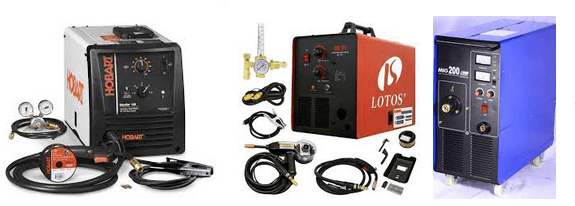
This is a new article that will show you the best MIG welder on the market you should consider selecting right away. If you are thinking about welding, you should ask yourself what kind of welding you want before buying any equipment. Almost all of the welding machines can make most joints in metal, but they can be better at some jobs than some other machines. And, one of the most universal welders is a MIG welder. You can consider using a MIG welder in order to weld heavy steel pipe or thin gauge sheet metal. A professional can make beautiful, deep and smooth welds with the help of a MIG welder while an amateur can make adequate welds.
Now, if you want to find the best MIG welder and how to choose it, this article may be helpful.
Table of Contents
- What Is MIG Welding?
- How To Choose Best MIG Welder?
- Top 15 MIG Welders Of 2024
- Best MIG Welder Reviews 2024
- 1 – Super Deal PRO Commercial MIG 130
- 2 – Goplus MIG 130 Welder Flux Core Wire
- 3 – Forney Easy Weld 261, 140 FC-i MIG Welder
- 4 – Lincoln Electric K2278-1 Handy Core
- 5 – Hobart 500559 Handler 140 MIG Welder 115V
- 6 – Lotos MIG140 140 Amp MIG Wire Welder
- 7 – LOTOS MIG175 175AMP MIG Welder
- 8 – Hobart 500554 Handler 190 MIG Welder
- 9 – Hobart Handler 210 MVP MIG Welder
- FAQs – MIG Welder
What Is MIG Welding?
MIG welding or Metal Inert Gas Welding is a process used to weld aluminum and other types of metals. It can be semi-automatic or automatic. MIG Welder uses a wire connected to the direct current source that works as an electrode and then combines 2 metal pieces by using a welding tool or gun. While the wire passes through the welder, a gas flow is also passes through the welder to clear the welding zone and keep the airborne contaminants free. The inert gas works like a shield during this process. This welding system is much faster than stick welding.
The disadvantages and advantages of MIG welding are determined by the type of MIG welder as well as the nature of your work. Before mentioning both the advantages and disadvantages of the MIG welding machine, it is important to first know what kind of your work that needs a MIG welder and which kind of MIG welder to use. And then, you will be able to evaluate both of its advantages and disadvantages.
Advantages:
Higher productivity: Many MIG welders have higher productivity because they do not have to constantly change rods and not have to repeatedly brush the weld. Generally, MIG welders work aster and cleaner.
Simple and good-looking welds: MIG welders offer better weld pool visibility and control provided by the auto-feed wire. And, MIG welders make the process simple to create a good -looking weld.
Simple to learn: Simplicity is known as one of the most important benefits of MIG welding. A beginner can learn how to use MIG welder in several hours. Some instructors say that they can give basic training in only 20 minutes with most of the time used to clean the weld.
Versatile: MIG welders very versatile and they can weld many different metals and alloys, while working in many ways like semi and fully automatic. MIG welders can work on the following metals such as copper, aluminum, stainless steel, magnesium, nickel, mild steel as well as other metals. MIG welding can be useful for lots of home welding jobs, it can also be used by many industries.
Clean: MIG welders use a shielding gas in order to protect the arc, so the loss of alloying elements is very little because the metal moves across the arc. Also, there is not any slag to remove, and only a little minor weld spatter will be produced. After a cleanup, MIG welders will be able to be back on the job thanks to its required minimal cleanup.
Faster welding speed: When using MIG welding, both of your hands can be free thanks to the continuously fed wire. And this can help improve the speed of welding, and the quality of the weld.
Disadvantages:
Cost: Welding equipment is costly and more complex, while it also sacrifices portability. Additionally, you may need to add up electrodes, shielding gas, and replacement nozzles for MIG welding.
Unsuitable for outdoor welding jobs: Apart from not being portable, using MIG welders is also not suitable for outdoor welding jobs because they utilize a shielding gas in order to protect the welding’s purity. Wind will affect the shielding gas as well as the welding’s quality. Also, a MIG welder cannot be worked in a field to repair the tractor, but it works well in the garage.
Limited positions: The high heat input and the fluidity of the puddle of MIG welders can rule it out for overhead or vertical welding. However, many welders will never think of welding in these positions. Therefore, you need to consider this factor before deciding whether or not to buy a MIG welder.
Unsuitable for thick metals: MIG welders work well on thin metals and they cannot deliver proper penetration for thicker metals that deliver a solid weld.
Fast cooling rates: When the weld is completed, the welded metals will cool at higher rates because they will not be covered by slag.
Shielding gas: You can need time to replace the shielding gas bottle while welding.
Metal preparation time: Before you weld using a MIG welder, you need to make sure that the material does not have any rust or dirt for safety’s sake and good-looking weld.
How To Choose Best MIG Welder?
When you plan on welding something, at first, you need to make sure that you have a general understanding about welding and how to choose the best MIG welder. And here are some useful tips that can help you know how to choose the best MIG welder.
Understand Your Needs
When it comes to finding the best MIG welder for the money, the first thing you need to know is your needs when using a MIG welder. You want to use it just for home use or industry use, and the workload of your welding jobs is a little or so much. Actually, understanding your needs will help you avoid purchasing a MIG welder that has more or less power than your needs.
Your Primary Power Requirements
You need to determine that your welding projects are home or industrial projects. This is because most at-home welding projects are related to thin metals, so you just need to select a MIG welder that works on this kind of metals. Nonetheless, this MIG welder will not be able to work on thick metals. If you really need a MIG welder that has high power, then you should opt for the more powerful MIG welders and of course, they come at a higher price.
The best option for those who have many welding objects to work on may be an all-in-one MIG welder that operates at 120/230 V. To use this kind of MIG welder, you just have to switch from the high voltage plug to the lower voltage plug.
Flux-Core Functions Or Multifunction
In the market, almost all of the welders support flux-core functions, but other welders do not. The MIG welder should be your preference if your welding objects are diverse. And if you want to get the best machine with many different purposes, you really have to opt for a multipurpose welder. The MIG welders can be used in many different cases such as for home repair, auto body, ranch applications, maintenance and repair. Some features you should look for when selecting MIG welders include standardized solid contractor circuits, auto-set system, and thermal overload protection.
Thermal Overload Protection
Overheating is a problem that makes MIG welders useless. Some MIG welders can only be used for a short periods of time and they overheat. Then, you have to wait for some time until they cool down. Therefore, when looking for the best MIG welding machine, you should consider save your time by selecting a MIG welder that owns the thermal overload protection. Remember that your welder requires to be used for long, having the thermal overload protection will be an insurance policy for you.
Duty Cycle
A welders output should be measured before you choose the type of MIG welder. The output of these welding machines will be measured by the use of voltage and amperage and rated as duty cycle. Generally, duty cycle implies to the amount of time that a welding machine can operate at a certain output without needing to exceed the limits of the temperature. It is often measured by 10-minute cycles. For example, a welding machine has a 20% duty cycle at 180A/240V. This means that this welder can weld continuously for two minutes at 180A/240V. After two minutes of welding, it requires about 8 minutes to cool. Another thing you need to pay attention is that duty cycle is proportional to the welding output. When you operate the welder at lower outputs, its duty cycle will increase. Therefore, according to your rated output, you can opt for a welder that has a proper duty cycle rate.
The Metal Thickness
The thickness of the welded metals is not very important when choosing a MIG welding machine. This is because nobody will want to invest in a welding machine that cannot adjust the current and the voltage. The type of welded metal, the welding position, the metal thickness, the joint configurations, the shielding gas, the wire diameter speed, as well as other factors will determine the voltage you require to adjust your machine while welding. Then, you can know the exact voltage required for the given thickness. In the market today, some digitalized MIG welding machines will automatically set the voltage and current you need to work on. When you turn on the Auto-set, you just need to dial the thickness of your welding metal and the welder will automatically set itself to your required voltage.
Portability And Weight
Other important factors that you need to pay attention when selecting a MIG welder are portability and weight. However, you may not need to think of the weight so much as the first priority should be the quality of the welding machine you choose. From the best options, select the lightest. Besides, the size of the machine is also a great factor because you may not want to move everywhere with a voluminous MIG welding machine.
Maintenance And Repair
This is a minor or major factor depending on your financial strength and flexibility. The fact is that all machines need maintenance and repair. You may know the best MIG welding machine that you should choose. However, the repair shop in your local area cannot provide its spare parts and even cannot repair it within. And this point can force you to select another MIG welder.
Top 15 MIG Welders Of 2024
Best MIG Welder Reviews 2024
1 – Super Deal PRO Commercial MIG 130
At a tight budget, the Super Deal PRO Commercial MIG 130 is recommended as a good deal that has almost all essential features for DIY or small welding projects.
First off, the package comes with a 38-lb welder, a welding wire, chipping hammer, a 0.9-mm reel, tips, ground cord, and others more. With such a compact dimension, you can expect this Super Deal to be lightweight and portable to move around.
Secondly, this welder is versatile for various purposes from MIG welding, undemanding duty-cycle welding tasks, mild-steel welding, and stainless-steel welding. This is thanks to the adjustable inductor, which allows controlling the waveform following your requirements, such as the soft electric arc, reduced spatter, increased fusion depth, and excellent welding performance.
However, please note that the Super Deal Pro can not weld aluminum because it does not support shielding gas. Not to mention, the 10% duty cycle is somewhat underpowered for such a heavy-duty task.
Anyway, this welder is still well-worth as the best MIG welder under $200 with some exciting features such as thermal overload protection and fan cooling. The tool will turn off automatically when the rated duty cycle is more than 105 AMPs per minute. Moreover, the fan will help cool the motor to protect the welder from overheating.
Pros
- Affordable price
- Very lightweight and durable
- Versatile for home repairs, car repairs, and barn repairs
- Safety features like auto thermal protection and cooling fan
- A full pack of accessories
Cons
- Limited capacity and duty-cycle power
- Poor manual guide
2 – Goplus MIG 130 Welder Flux Core Wire
At the same price category, Goplus MIG 130 Welder FluxCore Wire offers similar features like the Super Deal Pro.
Take the flux core wire, for example.
Instead of the shielding gas, the wire allows this Goplus MIG 130 to work as a stick weld since the flux will cover the weld. It is ideal for those involved in outside welding or heavy drafts. No gas welder also means less oxidation of the welded materials.
In addition, there are four levels of heat settings and ten degrees of feed speeds to choose at your preference. Such flexibility means the welder can cover a wide range of applications, whether a deeper weld over a variety of applications. The operation is easy to use with available buttons and rotary knobs.
In terms of construction, this welder is crafted with the heavy-duty stainless steel and painted coating to guarantee a long-last serving. Moreover, the overall size is compact for home DIY tasks. A carrying handle is even included to make transportation more straightforward.
The drawbacks are similar to other flux-cored welders. To be specific, you can not deal with aluminum, and the limited capacity is not ideal for heavy-duty tasks. Another big downside is, no warranty is included in the pack. Although the overall performance of this welder is proved to be durable, you still feel less secure.
Pros
- Inexpensive welder for home DIY
- Durable, portable and user-friendly construction
- Adjustable welding speeds and heat settings
- Additional features like flux-cored wire and thermal protection
Cons
- Limited capacity
- No warranty
3 – Forney Easy Weld 261, 140 FC-i MIG Welder
At a glance, this Forney Easy Weld 261 adopts the signature design like other welders of Forney, including the portable size, green color, and comfortable top handle.
The 261 140 FC-i is also a recommended entry-level flux-cored welder at 120V.
The Forney Easy 261 is an inverter, there is a premium duty cycle of 30% at 90A. The welder can provide three straight minutes over 10 minutes and a whopping output of 140A. The control is easy with a variable dial. The inverter-based design also helps the tool be much lighter – a big plus for transportation and operation.
We also like that you can upgrade the Forney Easy Weld 261 with a lot of accessories such as a ground clamp, torch-wrapped handles, MIG gun, an adapter, and a 12-month warranty. All help create a hassle-free operation.
What we desire the manufacturer to improve is the slow feed rate. Thus, the welder will not work for heavy materials or thick surfaces. Moreover, there is no shielding gas for aluminum welding.
Pros
- Very lightweight and functional
- Flexible inverter construction
- Easy controlling system
- Various accessories and reliable warranty
Cons
- Prolonged wire feed rate
- Not ideal for heavy-duty tasks
4 – Lincoln Electric K2278-1 Handy Core
The Lincoln Electric K2278-1 Handy Core is another recommended best MIG welder, which is advertised as a tremendous asset when it comes to DIY projects. As we have tested it carefully, we confirmed that the quality of this tool is reliable.
The beauty outside is the whole sleek aluminum cover, along with mental fixtures. Thus, you can expect this tool to be in last-long serving and sturdy. Internally, rather than basic features like many other flux-cored tools, this Lincoln Electric welder supports a flexible power and some advanced features.
The duty cycle is 20% at 70A, and the max output is 88A, meaning that this welder is suitable for light to medium projects. Structural jobs or what projects that need to handle a lot of weight are not ideal for this tool.
The additional cold contactor is useful for safety because it keeps the wire cool while you are turning on the tool but not ready to weld anything. Plus, there are four output options to flip a switch, go around for different jobs, and then get right back to what you are dropping off.
When you’re switching off between different jobs, you’re able to easily access any of four different output options with the turn of a knob. Instead of having to calibrate things while you’re on the job, you’re able to flip a switch, turn around & get right back to work.
Pros
- A lightweight, portable, and durable build
- Easy controls with few buttons – suitable for entry-level workers
- Additional cold contactor and different output options
Cons
- Light-duty flux core welder
5 – Hobart 500559 Handler 140 MIG Welder 115V
If the price is not your very first concern, you might want to go for Hobart 500559 Handler 140 MIG.
This is the advanced version of the Hobart 50072, which is known for the exceptional durable build, the versatility for various metals, and the user-friendliness for both beginners and intermediates.
Accordingly, the outer shell is crafted with thick steel, and the wire feed is made of metal. The inner parts are also made of high-quality materials. Thus, the use of rigorous and ongoing maintenance is minimal.
Unlike the flux-cored Hobart 500572, which does not support aluminum welding, the Hobart 500559 is capable of welding both the ¼-inch thin gauge steel and heavy metals like aluminum and stainless steel. In other words, you can use this welder for industrial projects. This is thanks to the cast-aluminum drive system and heavy-duty clamp.
Besides the versatile capabilities, the welder is also praised for its ease of use. For beginners, the box setup is simple to learn on. Meanwhile, the experienced consumers can upgrade the tool with plenty of accessories such as the flux core, solid wire, or aluminum.
The downside includes the weight – while being compact, the Hobart 500559 is as massive as 55 lbs. Fortunately, you can transport it more efficiently with a cart.
Pros
- Superb built-to-last construction
- Capable of handling various metals – even aluminum
- Easy to set up and operate
Cons
- Not cheap
- A bit heavy
6 – Lotos MIG140 140 Amp MIG Wire Welder
This Lotos MIG140 140 Wire Welder features almost all you need for the best MIG Welder under $500. At this price, the welder should be more potent for both home repairs and industrial tasks.
And fortunately, this Lotos tool does support various metals ranging from 24-inch gauge to 1/4-inch thickness. The power output is adjustable from 30A to 140A. Furthermore, the duty cycle is very reasonable – 20% at 90A, meaning you can straightly weld for 2 minutes over 10 minutes. More interestingly, this MIG welder can be flexibly used as a flux-core welder with or without gas hose.
We also appreciate that the machine is built with user-friendliness. For example, there is an aluminum wire feeder to offer a more stable welding experience. In addition, you can control the precise feeder speed and voltage with a couple of digital 2T and 4T switches.
However, some wire feeder issues are having been reported, so you had better check everything when the package arrives.
What’s more, please note that the weight is 54 lbs – twice as much as other MIG welders on the list. So, you have some problems with transportations.
Pros
- Durable construction
- Decent duty cycle
- Versatile capacity for both DIY and large projects
- User-friendly operation
Cons
- Heavy a bit
- Some wire feeder problems
7 – LOTOS MIG175 175AMP MIG Welder
Coming at a higher price compared to the Lotos MIG140, the Lotos MIG175 175 AMP Welder supports a bigger capacity and more advanced features to complete more welding tasks. Be mindful that this tool is also more substantial than its predecessor.
Surprisingly, this welder is still very user-friendly thanks to its consumables and the argon regulator, along with accessories like masks or spool gun. In accordance, you might complete the installation and settings up in less than 10 minutes.
Besides, power is a big plus. The duty cycle at the maximum capacity is 20%, and that at 60A is 60%. The DC output current is adjustable between 30 and 175A. For that reason, this Lotos tool can work with high and even heavy-duty materials. With a proper gas supply, you possibly weld 1/8-inch + plate.
Take into account; this machine requires a 220/240V outlet and the ground clamp of 2 inches at the maximum width. Fortunately, the overload protection is included as a safety feature.
One thing to improve is the 2-stage trigger, which features a 3-second timer before striking the arc. If you accidentally forget to count it in your mind, you can end up flooding the job site with shielding gas.
Pros
- Powerful and flexible output capacity
- Durable construction and reliable accessories
- Easy installation and settings up
- Reliable and stable operations
Cons
- Heavy machine
- 2-stage trigger system
8 – Hobart 500554 Handler 190 MIG Welder
As we mentioned above, Hobart is a well-known manufacturer of welding equipment. Thus, you can find many products under this brand, from low-end to high-end categories.
This Hobart 500554 Handler 190 MIG Welder is an excellent example as a tool for the professionals. Although it might be costly, once you use it – you know why it is worth your money.
Overall, the tools offer a superb wide range of output from 25 to 190A. It is both useful as a MIG welder and a flux-cored welder, as well.
In particular, the Hobart 500554 supports some user-friendly features and powerful technology, especially the seven voltage selections and the built-in wire feed. Not only can consumers get better control on the arc, but they have confirmed that the drive roll lever is quickly released and penetrated.
In drawbacks, we do not appreciate the accessories. While the cable is rather short, the helmet also is not durable and protective. Not to mention, you need to get 220 or 220V outlets to get it started.
Anyway, come to think of the welder itself, this version is one of the best MIG Welders under $1000.
Pros
- A wide range of output from 25 to 190A
- Extremely durable build
- User-friendly, powerful, and safe features
- Out-of-the-box accessories
- Five years of warranties
Cons
- Heavy for transportation
- Expensive
- Ineffective accessories
9 – Hobart Handler 210 MVP MIG Welder
The Hobart Handler 210 MVP MIG Welder is the upgraded version of the Hobart 500554 version to deal with more challenging projects.
Stable features, just to name a few, are the durable outer case, the mixed capability of MIG and flux-cored welders, the flexible control of 7-position voltage at 230V, etc.
The main difference is, the Hobart Handler 210 MVP provides dual voltages of 230V and 115V so that you can choose at your convenience. The duty cycle ranges from 20% at 115V 90A to 30% at 230V 150A. Besides seven voltage settings for 230V and another four positions for 115V. Such flexibility allows maximum control and excellent performance, whether it is to weld on light or heavy-duty projects.
The high-quality safety features like motor protection or thermal overload are also what to expect at the high-end welders. The two will keep the machine cold during the operation. It means a longer lifespan and better productivity. For this reason, this tool becomes the best MIG welder under $1000.
The heavy construction, again, is the noticeable disadvantage. To move it around, you might need to invest in a cart. And the cables are still short.
Pros
- Built-to-last shell
- Very adaptive to the working environment
- Supportive for various types of projects
- Ease of use for both beginners and experienced workers
- Flexible as a MIG and flux-cored welder
Cons
- Pricey tag and heavy build
- Short cables
10 – Lincoln Electric Powermig 210 Mp #K3963-1
No surprise to see another Lincoln Electric product here. This brand guarantees its quality. Here we introduce you to the Powering 210 MP #K 393-1 – a multiple-purpose welding machine.
As you might already know, the multipurpose tool possibly works with MIG, FCAW, TIG, and Stick welding at ease. More flexibility, this machine features a dual voltage system of 120V and 230V – adaptive to both household and industrial currents. The duty cycle is 40% (at 100A) and 25% (at 200A.)
The machine can weld the stainless steel and mild steel up to 3/8 inch and the aluminum up to 3/16 inch. When it comes to sticking electrodes, the welding thickness is only as thin as a 5/32 inch. Unfortunately, like the Hobart 500536 Ironman, the spool gun is helpful for TIG welding, yet not included.
Now that you are already satisfied with its enormous capacity, you might be anxious, whether it is portable or easy to use.
Then, yes! Despite being functional, the machine turns out to be effortless to handle. There is even a visible control system for you to check the voltage, output, wire speed, and many other things. In terms of weight, this welder is 40 lbs – of course, not very lightweight but still less bulky than others at its price category.
Pros
- Multipurpose welding machines
- Powerful dual-voltage performance
- User-friendly controlling interface
- Sturdy but still portable build
Cons
- Not cheap at all
- No spool gun available in the package
FAQs – MIG Welder
MIG welding is a process that joins metals by heating them with an electric arc, and then using a wire to feed the molten metal into the weld. It is a versatile process that can be used for a variety of different applications.
Here are 10 frequently asked questions about MIG welding:
1. What are the different types of MIG welding?
There are three main types of MIG welding: gas metal arc welding (GMAW), gas tungsten arc welding (GTAW), and flux-cored arc welding (FCAW).
2. What is the difference between MIG and TIG welding?
MIG welding is a process that uses a continuous wire feed, while TIG welding uses a welding rod. MIG welding is typically faster and easier to learn than TIG welding.
3. What is the difference between MIG and FCAW welding?
MIG welding uses a continuous wire feed, while FCAW welding uses a flux-cored wire. FCAW welding is typically faster and easier to learn than MIG welding.
4. What is the difference between GMAW and GTAW welding?
GMAW welding uses a continuous wire feed, while GTAW welding uses a welding rod. GMAW welding is typically faster and easier to learn than GTAW welding.
5. What is the difference between gas and flux-cored welding?
Gas welding uses a shielding gas to protect the weld from contamination, while flux-cored welding uses a flux-coated wire that contains a core of flux. Flux-cored welding is typically faster and easier to learn than gas welding.
6. What is the difference between MIG and stick welding?
MIG welding uses a continuous wire feed, while stick welding uses a welding rod. MIG welding is typically faster and easier to learn than stick welding.
7. What is the difference between MIG and TIG welding in terms of quality?
MIG welding is typically faster and easier to learn than TIG welding, and it produces a higher quality weld.
8. What are the different types of MIG welding wires?
The different types of MIG welding wires include solid wire, flux-cored wire, and cored wire.
9. What is the difference between solid MIG welding wire and flux-cored MIG welding wire?
Solid MIG welding wire does not contain a flux core, while flux-cored MIG welding wire does contain a flux core. Flux-cored welding wire is typically faster and easier to learn than solid MIG welding wire.
10. What is the difference between gas MIG welding and flux-cored MIG welding?
Gas MIG welding uses a shielding gas to protect the weld from contamination, while flux-cored MIG welding does not use a shielding gas. Flux-cored welding is typically faster and easier to learn than gas MIG welding.
Conclusion
After reading this review, hope that you can have a general understanding about MIG welder, as well as ways to choose a good welder. All of the best MIG welder as we mentioned above are great options. According to your requirements and financial condition, you can choose any of these machines for your welding projects.
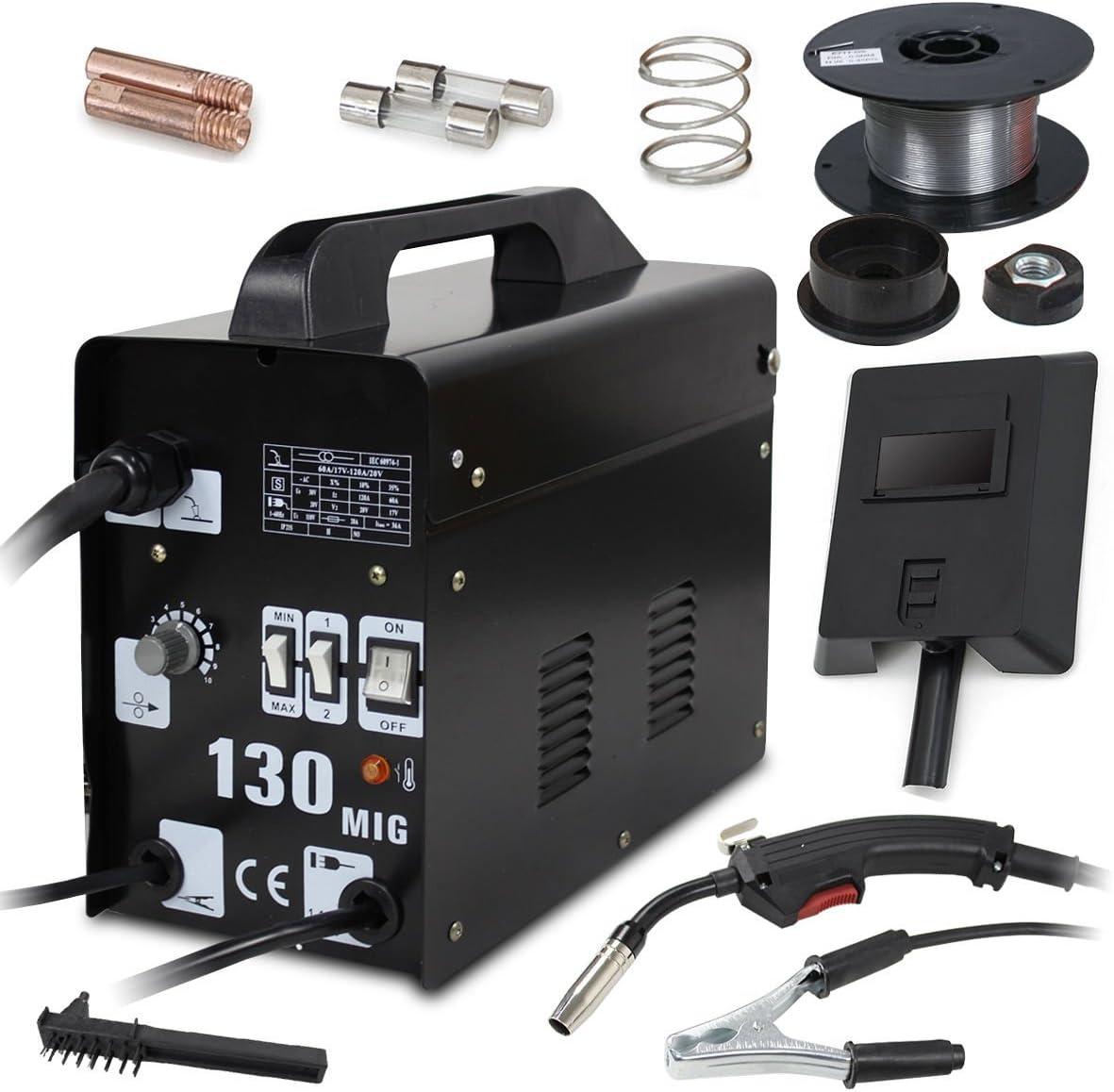











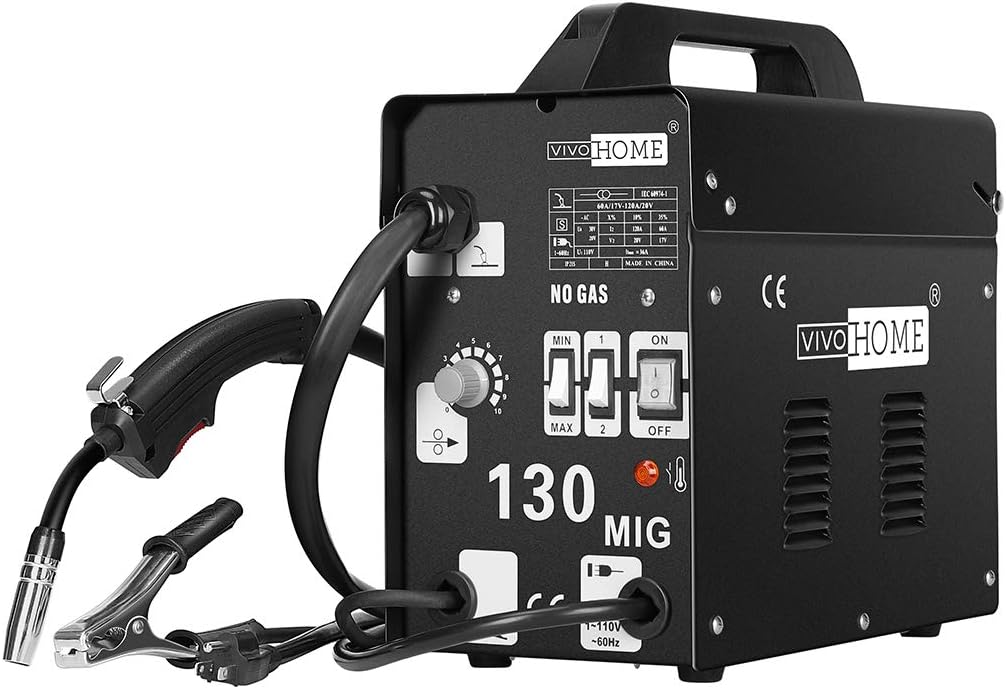















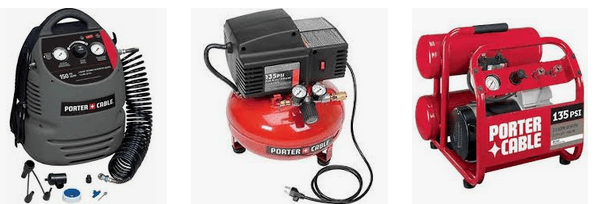
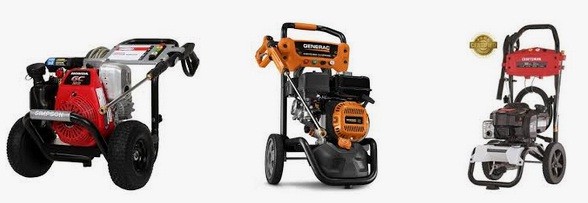
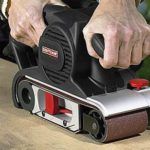

Leave a Reply